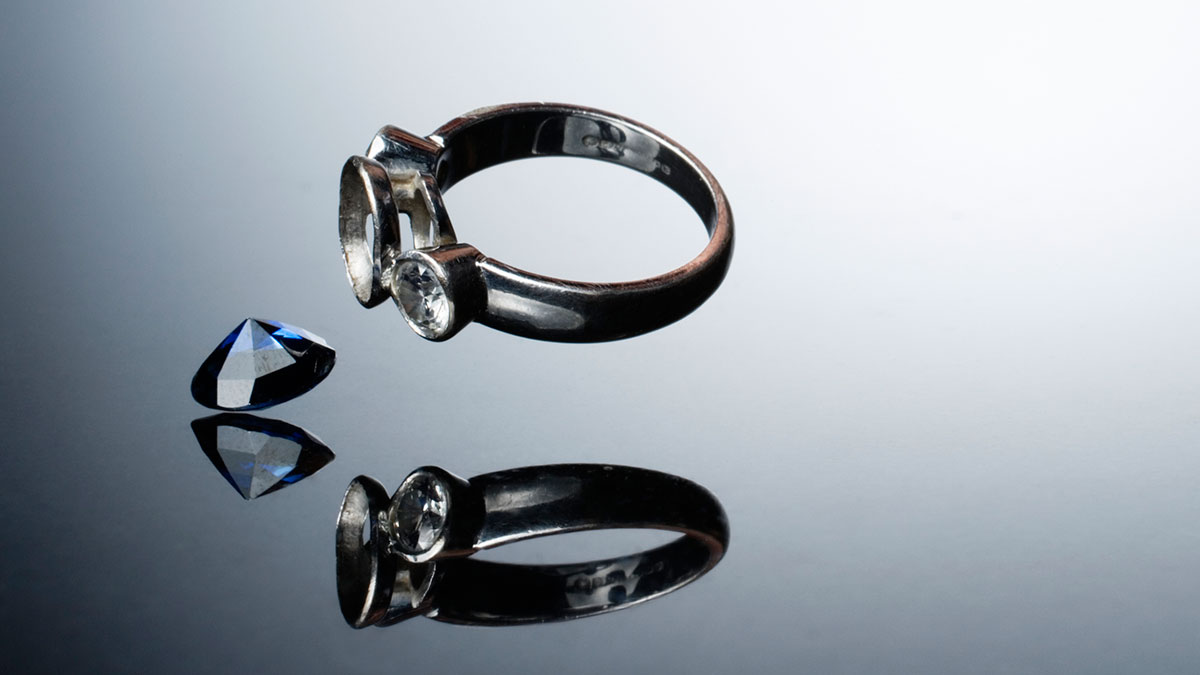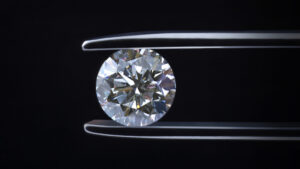Global price slump suggests diamonds might not be quite so forever

Could a flailing global market for diamonds mean the end of natural stones? Pic via Getty Images.
Have you just popped the question to the love of your life? Did you do the whole ‘getting down on one knee’ thing, sweating bullets in the knowledge that she’s been dreaming of this her whole life, and if you cock this up she will never let you live it down?
And did you fork out a two, or even three, months’ salary (or, god help you, more) on that fancy diamond engagement ring?
If you’ve answered “yes” to all of those questions, I have some terrible news for you: you could have gotten out of that for a whole let less money, and you wouldn’t have been alone.
Yeah, settle down Romeo
You’re not an idiot for falling in love, or getting married, or whatever it is you’re doing in order to ensure that you don’t end up dying alone, surrounded by cats who you’re positive “really love you” but have just been waiting patiently for a chance to eat your eyeballs when you’re dead.
But, you might have been a bit quick off the mark when forking out colossal quantities of your hard-earned on that ring, because – spoiler alert – it’s just a dumb rock.
More accurately, it’s a mineral – a clear and colourless crystalline form of pure carbon that I promise you is technically worth three eights of five eighths of sweet bugger all.
Of course, this isn’t news. Deep down, we all knew this – even as we winced in agony while forking out the GDP of a well-heeled Gold Coast apartment block on that 2-carat, flawless E-colour asscher cut monolith that’s “too nice to wear every day”.
What’s news is that whatever you paid for that diamond is now, officially, way too much – not just because of the whole “It’S JuST a RoCk!” thing, but also because the retail value of that stone has crashed as well.
That’s according to a fella called Paul Zimnisky, whose hobbies include keeping track of what rough diamonds cost, and the news from him is not great.
Yes, owning an operating, producing diamond mine is still pretty much a licence to print money, but it is rapidly becoming less economic to do so.
Zimnisky has been tracking diamond prices for years, and you don’t need to be an expert gemologist to see that the industry has a bit of a problem.
The numbers don’t lie
According to Zimnisky, rough diamond values have been tumbling since hitting record highs in 2022, to the tune of about -30% – and this year-to-date alone the market for rough stones is off by -5.7%.
That’s despite the global output of diamonds forecast to decline, as recently stated by ASX-listed Burgundy Diamond Mines, which told investors in late may that output worldwide is set to fall from ~121 Mcts in 2023 to about 113 Mc in 2024.
With that in mind, why the falling prices?
That’s a simple question with a complicated answer – but if you’re short on time, the cheat-sheet version is “China”, and “India” with a dash of “Russia” thrown in for good measure.
Starting with China, the news from there is that the artificial stone market is booming, alongside improvements and streamlining in the manufacturing process that has led to a significant decrease in the cost per stone.
Things in that sector started to come to a head in 2022, when natural diamond prices were at their peak, and the lab-grown equivalents started falling in price, by a lot.
Early in 2023, Ziminisky reported that demand for the lab-grown stones grew to around US$12 billion, while at the same time the cost of those stones fell by roughly -20% – and the market in China has played a massive role in how that’s played out.
Prior to 2000, the diamond market in China was “largely nonexistent”, Ziminisky says.
However, a big push by the undisputed giant of the industry, De Beers, saw China grow in terms of market share to become the second-largest market in the world for diamond jewellery.
Fast forward to 2022, and consumers in China, and around the world, started to become a little more savvy about their spending habits when it came to diamonds. The stigma that was attached to lab-grown diamonds decreased, keeping pace with a steady but deep decrease in the cost to consumer.
With demand rising and costs dropping for lab-grown stones, the result was an inevitable market shift away from natural stones to the cheaper, but no less sparkly, alternative, thanks in no small part to US giant Signet Jewelers and global fashion jewellery powerhouse Pandora – the latter of which has held an oversized presence in the Australian market for more than a decade.
But what about India and Russia?
The Indian market has seen a marked decrease in terms of natural diamonds, with a buying hiatus there in 2023 causing headaches for the likes of De Beers, and other major supplier ALROSA.
The downturn led to both of those major suppliers stockpiling to varying degrees, with ALROSA effectively suspending all sales in October and November, and De Beers reporting a 70% drop in year-on-year sales for the quarter.
That’s led to De Beers shifting tactics, with a major rebrand of its Forevermark diamonds away from the loose stone market, and into a predominantly readymade jewellery product line instead, as a response to the changing tide in the Indian market, and others worldwide.
Meanwhile Russia – an outsized source of natural diamonds ever since Australia effectively exited the market a few years ago – has been operating as the world’s largest producer of natural diamonds by volume, accounting for roughly 25% of the global market.
The bad news for Russia is that it’s been slapped with a range of sanctions by the G7, aimed at slowing down that income stream in the wake of Russia being problematically expansionist when it comes to its neighbours.
In March, sanctions went into force that prohibited G7 countries from buying any stones that could be polished into goods that meet or exceed a 1-carat cap – which covered an estimated 45% of the gem quality stones coming out of Russia.
The sanctions are due to get even harsher in September, when the size cap on gemstones is reduced to 0.5 carats, taking about US$3 billion of the large diamond market off the table for Western consumers.
Whether the increasingly tight sanctions will see an explosion in Russia’s “cutting 1-carat diamonds in half” industry remains to be seen.
China, notably, is not part of the G7, so the sanctions don’t apply. But that’s not a huge concern for the Chinese market, because it means China is in a strong position to underbid on those stones for the foreseeable future – all the while, making bank on the lab-grown market as production costs continue to tumble.
What it means for Australia
Against the backdrop of all of this has been Australia’s fall from the top of the heap when it comes to diamond production.
Once responsible for about a third of the world’s diamond supply, the local industry dwindled to basically zero when Rio Tinto (ASX:RIO) took the decision to shutter the Argyle diamond in the Kimberley region of WA in 2020, after 37 years and production of more than 865 million carats of diamonds.
The other major diamond mine of note, the Merlin mine in the Northern Territory, is similarly unlikely to make a dent in the global market any time soon. It operated briefly in the early 2000s, and produced a remarkably high percentage of gem-quality diamonds, before closing in 2003.
It’s since changed hands, and is currently controlled by Australian Natural Diamonds, a wholly owned subsidiary of ASX-listed Lucapa Diamond Company (ASX:LOM).
At its most recent AGM, Lucapa told shareholders that exploration work has been underway at Merlin for a while, but with the company heavily focused on its two operating mines in Angola, it’s unlikely that there’s going to be any major announcements from Merlin – barring a radical change in fortunes as in-fill drilling at the site continues.
There are other, smaller operators on the ASX that are diamond-focused, but for the most part they are still deep in the exploration phase of operations.
That includes the likes of Gibb River Diamonds (ASX:GIB), which recently announced that it has secured three key mining licences that the company says lies “at the heart of developing the Ellendale Diamond Project” in WA.
And the team at Burgundy Diamond Mines (ASX:BDM) seems outwardly optimistic about the future of the diamond market.
In its recent Investor Engagement and Diamond Market Outlook presentation, the company noted that there’s been an appreciable fall in the cost-to-market of artificial diamonds, but that it remains confident that it’s likely to help the natural diamond industry, rather than hamper it.
“Market segmentation between lab grown and natural diamonds is unfolding [into] two separate, co-existing products,” the company says, adding that natural diamonds “will not be “replaced”, but will become more valued, particularly in the luxury jewellery space.”
Related Topics
UNLOCK INSIGHTS
Discover the untold stories of emerging ASX stocks.
Daily news and expert analysis, it's free to subscribe.
By proceeding, you confirm you understand that we handle personal information in accordance with our Privacy Policy.








